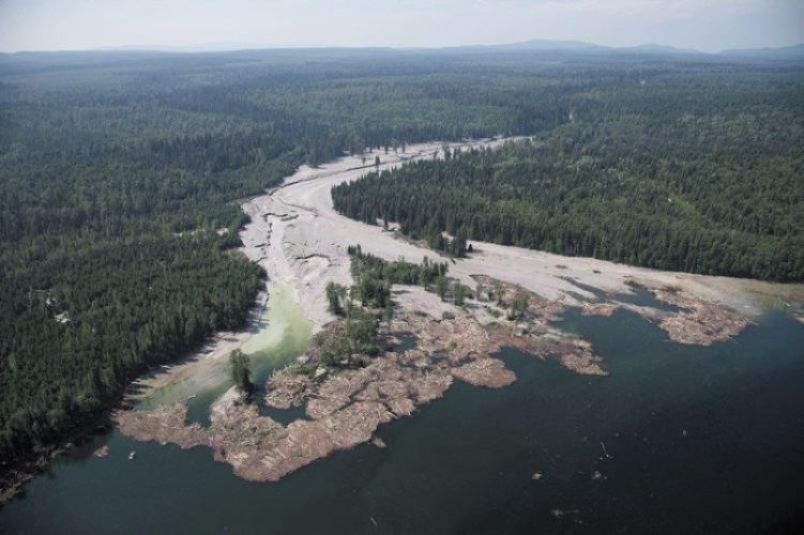Environmentalists and Mount Polley mine-area residents are anxiously waiting as one deadline approaches for federal agencies to lay charges over the 2014 collapse of the B.C. Interior mine's tailings dam.
After a 4-1/2-year investigation, a team comprised of officials with Environment Canada and Fisheries and Oceans Canada, along with the B.C. Conservation Officer Service, delivered a charge package to federal prosecutors this spring.
It is now up to the Public Prosecution Service of Canada to determine if charges will be laid.
Under federal law, there is a five-year window that ends Aug. 4 to lay charges in a summary conviction under the Fisheries Act, where a large corporation faces fines up to $8 million.
However, if federal prosecutors were to lay more serious charges as an indictment -- which come with higher maximum fines of $12 million -- there is no timeline.
Another deadline already passed at the three-year mark, when British Columbia officials decided not to lay charges.
One of the largest mining-dam failures in the world in the past 50 years, the Aug. 4, 2014, dam collapse of Imperial Metals' gold mine in the B.C. Interior shook the industry and caused concern among the public, First Nations and environmental groups that aquatic life would be harmed, particularly salmon that use the Quesnel Lake system to spawn.
"We are holding our breaths over the next couple of weeks to see what happens," said Christine McLean, who has a home on the lake. "If charges are laid, we feel that we will finally get some justice."
In a written response, Environment Canada said the investigation team's charge report was delivered April 2, 2019.
The Public Prosecution Service of Canada, with the help of the B.C. Prosecution Service, is assessing the charge file. "As the matter is now under charge assessment, (Environment Canada) is not in a position to provide further comment at this time," ministry spokesman Mark Johnson said Friday.
Linda Nowlan, a staff lawyer with West Coast Environmental Law, said the fact federal officials have mentioned there is no timeline for an indictment, may mean they are considering that route.
However, Nowlan said she hopes that charges are laid soon.
"I would be astonished if they did not lay charges, but they have to think they have a likelihood of conviction," said Nowlan. "And if they think the company exercised due diligence that might give them second thoughts."
Late last year, Imperial Metals announced that action for damages from the tailings dam failure had been settled among the parties, which included engineering firms, and resulted in net payments to the mining company of $108 million.
Nowlan said the settlement would "no doubt" be taken into consideration in deciding whether to lay charges.
Mining Watch Canada director Ugo Lapointe is concerned about the length of time it has taken to lay charges and also that most penalties from spills into the environment are levied when companies reach settlements and plead guilty.
"I think it stinks. It doesn't look good," said Lapointe.
The largest penalty to a mining company in Canada was $7.5 million issued to Cliff Resources in 2014 for the Bloom Lake Mine spills over four years. The company pleaded guilty to 45 charges under the Fisheries Act, including a breach of a tailings pond.
The largest penalty to a mining company in Canada was $7.5 million issued to Cliff Resources in 2014 for the Bloom Lake Mine spills over four years. The company pleaded guilty to 45 charges under the Fisheries Act, including a breach of a tailings pond.
The failure at the Mount Polley gold and copper mine's earth-and-rock dam spilled millions of cubic metres of mine effluent and tailings into Quesnel Lake, after scouring nine kilometres of Hazeltine Creek, where trout and coho salmon spawned.
The mine effluent and tailings consisted of finely ground rock, remaining after the milling process to extract gold and copper, that contain potentially toxic metals. Imperial Metals has spent millions of dollars to rehabilitate Hazeltine Creek.
The tailings dumped into Quesnel Lake remain at the bottom of the lake. Studies on the effect of the spill are expected to continue for years.



